Decorating a kids’ room is one of the most exciting projects for parents. It’s not just about creating a space to sleep—it’s about designing an environment where imagination flourishes, creativity blooms, and childhood memories are made. A well-decorated kids’ room combines functionality, safety, and fun to create the perfect sanctuary for your little ones.
1. Choose the Right Color Scheme
Color is the foundation of any room design, and it’s especially important in a child’s space. The right colors can stimulate creativity, promote calmness, and make the room feel inviting.
Color Tips:
- Pastel shades like soft blue, mint green, and blush pink create a calming atmosphere
- Bright primary colors energize the space and encourage play
- Neutral base colors with colorful accents offer flexibility as your child grows
- Consider gender-neutral palettes for longevity
- Use an accent wall to add visual interest without overwhelming the space
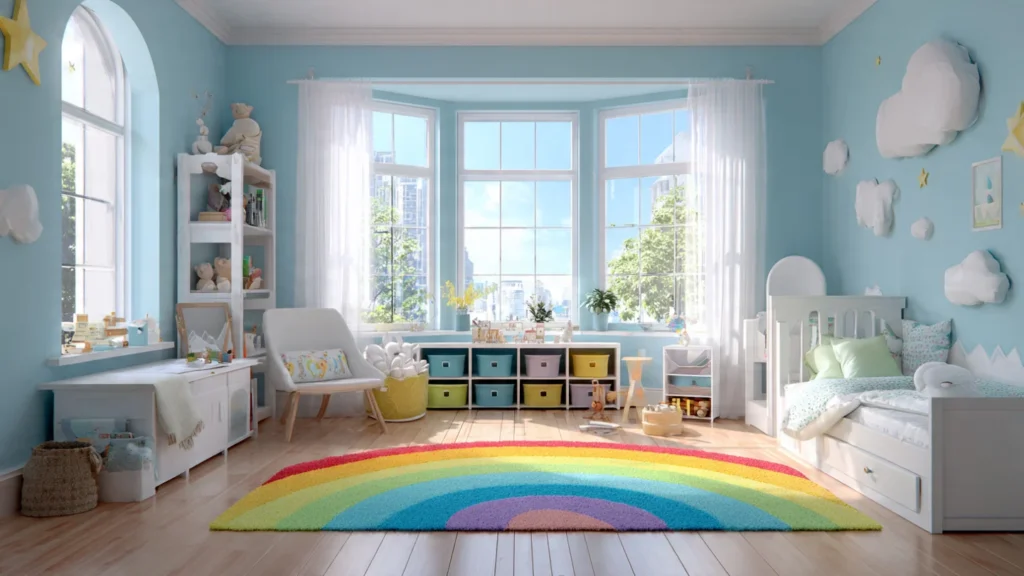
2. Select a Fun Theme
Theme-based decoration gives the room personality and makes it feel like a special place designed just for your child. Themes can be based on your child’s interests, hobbies, or favorite characters.
Popular Theme Ideas:
- Space and astronauts
- Jungle safari with animals
- Under the sea adventure
- Superheroes and comic books
- Fairy tales and princesses
- Sports and athletics
- Dinosaurs
- Vehicles and transportation
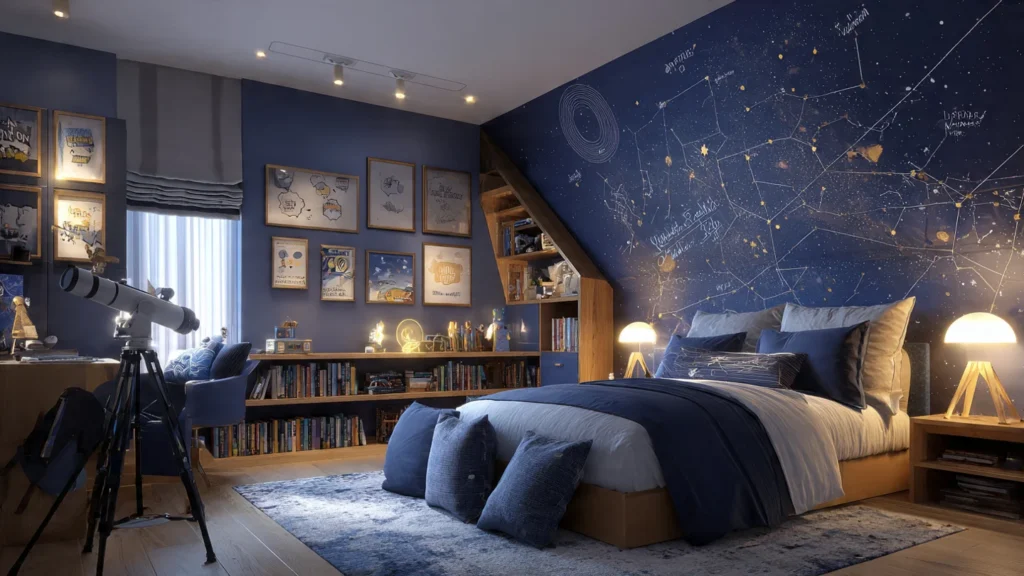
3. Invest in Functional Furniture
Kids’ furniture needs to be safe, durable, and adaptable. As children grow quickly, choosing versatile pieces can save money and effort in the long run.
Essential Furniture Pieces:
- A comfortable bed (toddler bed, twin, or bunk beds for shared rooms)
- Study desk and ergonomic chair for homework
- Dresser or wardrobe for clothes storage
- Bookshelf to encourage reading habits
- Toy storage units with bins or baskets
- Soft seating like bean bags or floor cushions
Safety Considerations:
- Rounded edges on furniture
- Anchored heavy furniture to walls
- Non-toxic finishes and materials
- Age-appropriate bed heights

4. Create Smart Storage Solutions
Clutter is inevitable in a child’s room, but smart storage solutions can keep chaos under control while teaching organizational skills.
Storage Ideas:
- Open cubbies for easy access to toys
- Labeled bins and baskets for different toy categories
- Under-bed storage for seasonal items
- Wall-mounted shelves to save floor space
- Multi-functional furniture like storage ottomans
- Pegboards for displaying art and hanging accessories
- Closet organizers with child-height rods and shelves
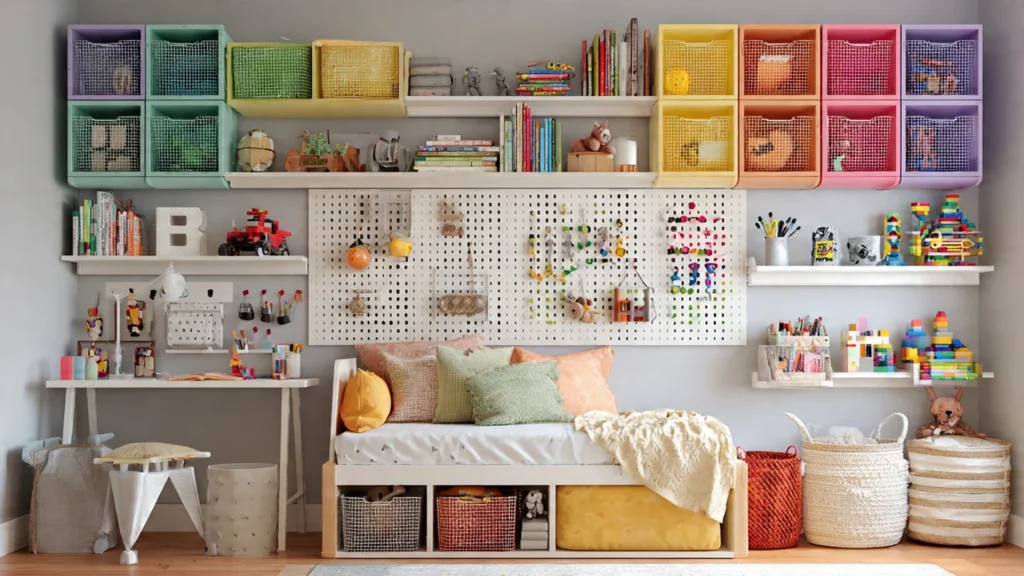
5. Design a Learning and Play Zone
Separate areas for different activities help children focus and understand boundaries between playtime, study time, and rest time.
Zone Ideas:
- Study Area: Well-lit desk space with organized supplies, comfortable seating, and minimal distractions
- Play Corner: Soft rugs, toy storage, and space for active play
- Reading Nook: Cozy corner with cushions, good lighting, and accessible bookshelf
- Creative Station: Art table with supplies for drawing, crafting, and projects

6. Add Wall Decor and Art
Wall decor brings personality and visual interest to the room. It’s also an opportunity to inspire and educate your child.
Wall Decor Options:
- Removable wall decals and stickers (easy to change as interests evolve)
- Framed prints of inspirational quotes
- Growth chart to track height
- Educational posters (alphabet, numbers, world map, solar system)
- Gallery wall of your child’s artwork
- 3D wall art like paper flowers or butterflies
- Chalkboard or whiteboard paint for creative expression
- Fairy lights or string lights for ambiance
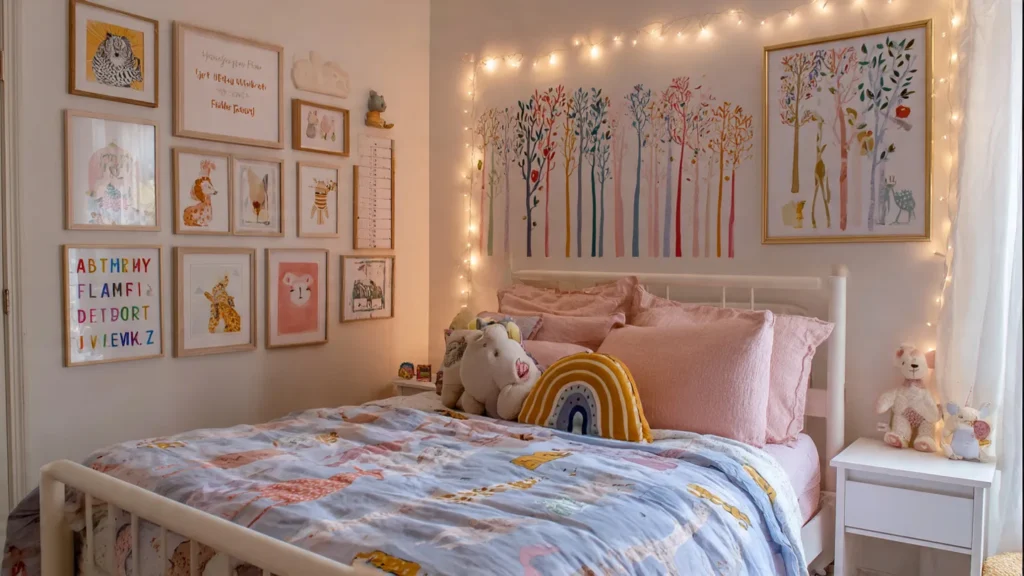
7. Perfect the Lighting
Good lighting is essential for safety, functionality, and creating the right mood. Layer different types of lighting for maximum versatility.
Lighting Types:
- Ambient Lighting: Main ceiling fixture or recessed lights
- Task Lighting: Desk lamp for studying, reading lamp
- Accent Lighting: String lights, night lights, decorative lamps
- Natural Light: Maximize with sheer curtains or blinds
Safety Tips:
- Use LED bulbs that stay cool
- Secure cords out of reach
- Install dimmer switches for bedtime
- Choose night lights with automatic sensors

8. Add Soft Textiles and Comfort Elements
Textiles add warmth, comfort, and personality to the room. They’re also easy to change as your child’s tastes evolve.
Textile Elements:
- Comfortable bedding in fun patterns
- Throw pillows and cushions
- Soft area rugs (machine washable recommended)
- Window treatments (blackout curtains for better sleep)
- Play tents or canopies
- Wall tapestries
- Bean bags and floor poufs
Texture and Pattern Tips:
- Mix different textures for visual interest
- Coordinate patterns with the overall color scheme
- Choose durable, washable fabrics
- Layer rugs for added comfort
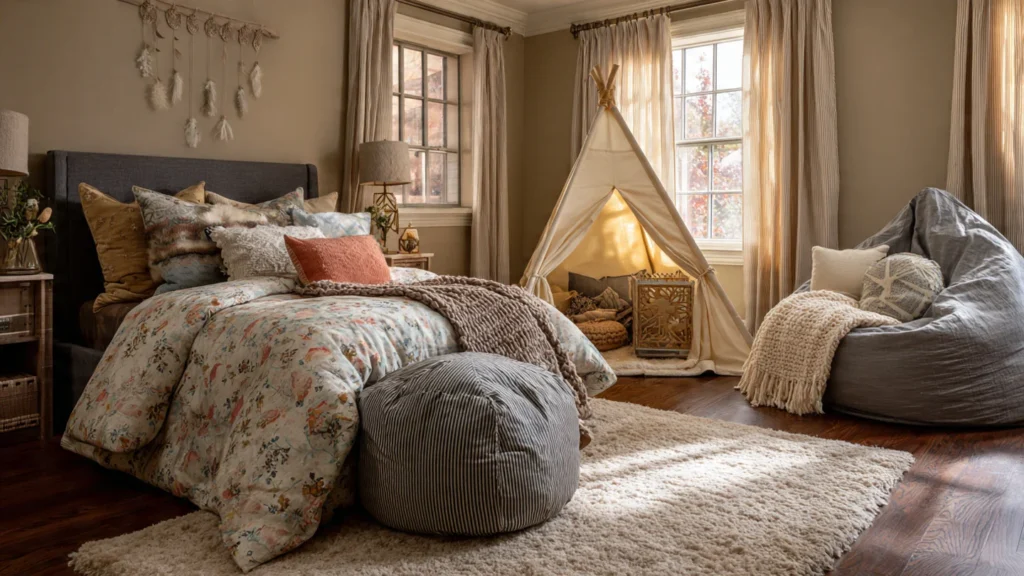
Bonus Tips for Successful Kids Room Decoration
1. Involve Your Child: Let them participate in choosing colors, themes, or decor items. This gives them ownership of their space.
2. Plan for Growth: Choose adaptable designs that can transition from toddler to teen with minor updates.
3. Prioritize Safety: Secure furniture, cover outlets, use cordless window treatments, and choose non-toxic materials.
4. Keep It Flexible: Use removable decor elements that can be easily changed without major renovation.
5. Create Display Areas: Showcase achievements, artwork, and collections to boost confidence.
6. Consider Sensory Elements: Different textures, soft lighting, and calming colors can help with sensory regulation.
7. Budget-Friendly Options: DIY projects, thrift store finds, and repurposed furniture can create a beautiful room without breaking the bank.
8. Maintain Functionality: No matter how cute the decor, the room must be practical for daily use.
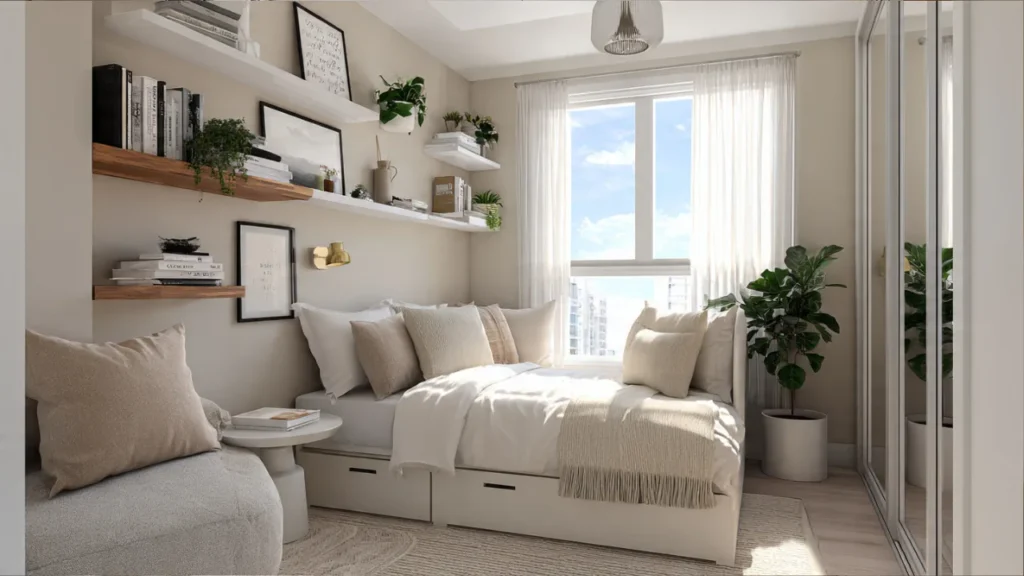
Conclusion
Decorating a kids’ room is about balancing aesthetics with functionality while creating a space that nurtures your child’s development and happiness. Whether you’re working with a small nursery or a spacious playroom, these tips will help you create a magical environment where your child can dream, play, learn, and grow.
Remember, the best kids’ room is one that reflects your child’s unique personality and evolves with them through different stages of childhood. Start with these foundational elements, and don’t be afraid to get creative and have fun with the process!
What’s your favorite kids room decorating idea? Share your tips and experiences in the comments below!
Also Read: Most Relaxing Living Room Colors in 2025 | Expert Interior Design Guide
